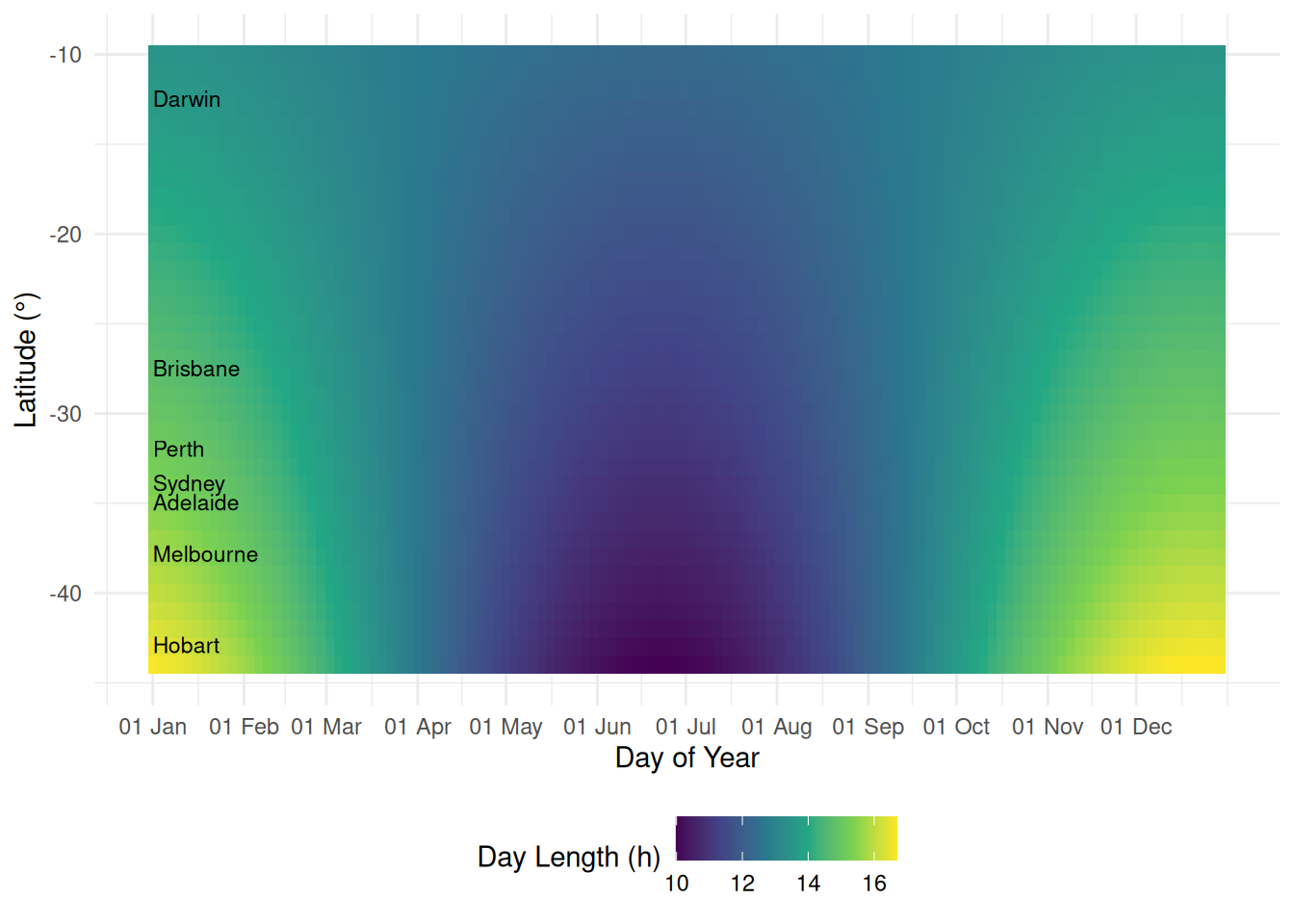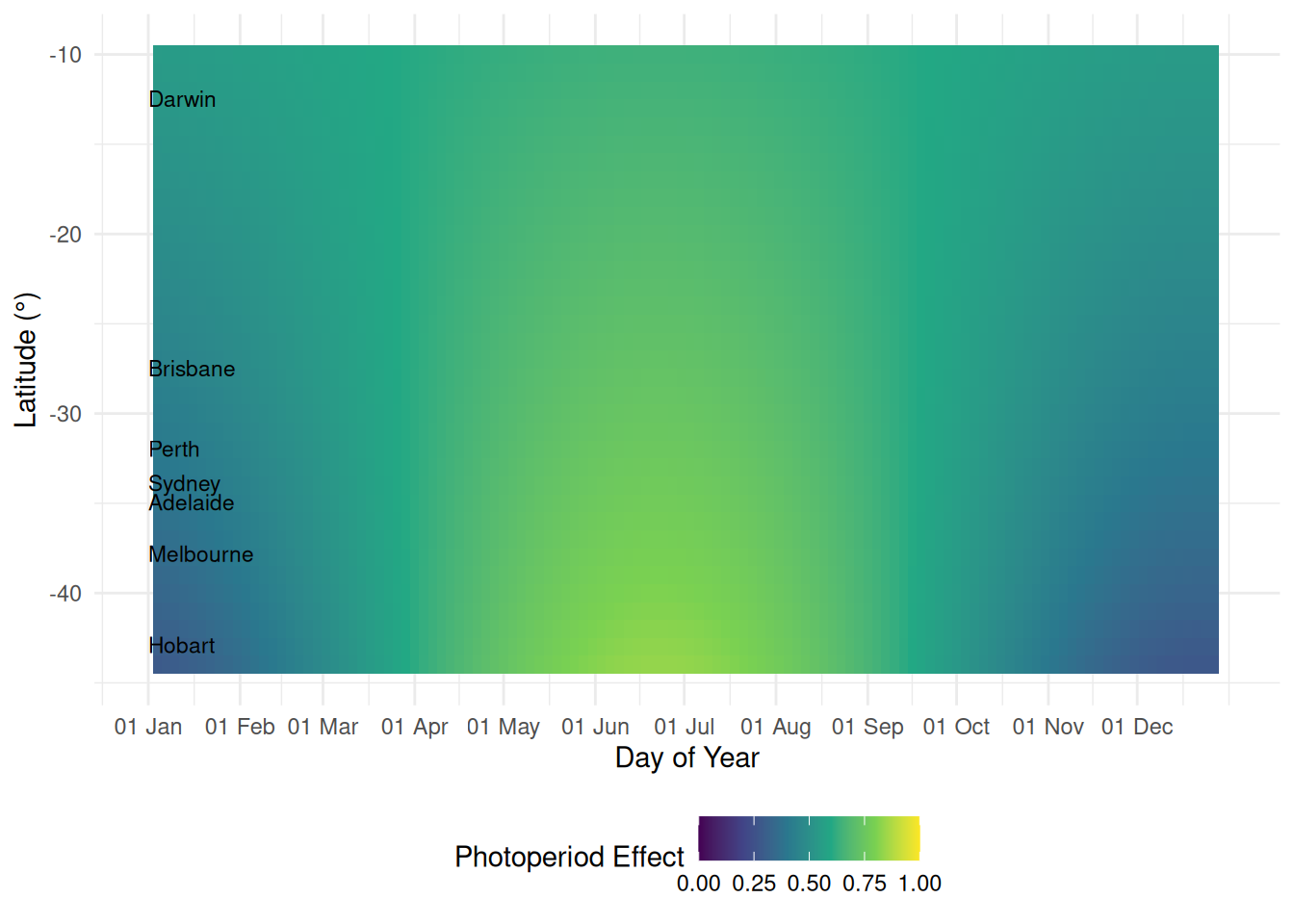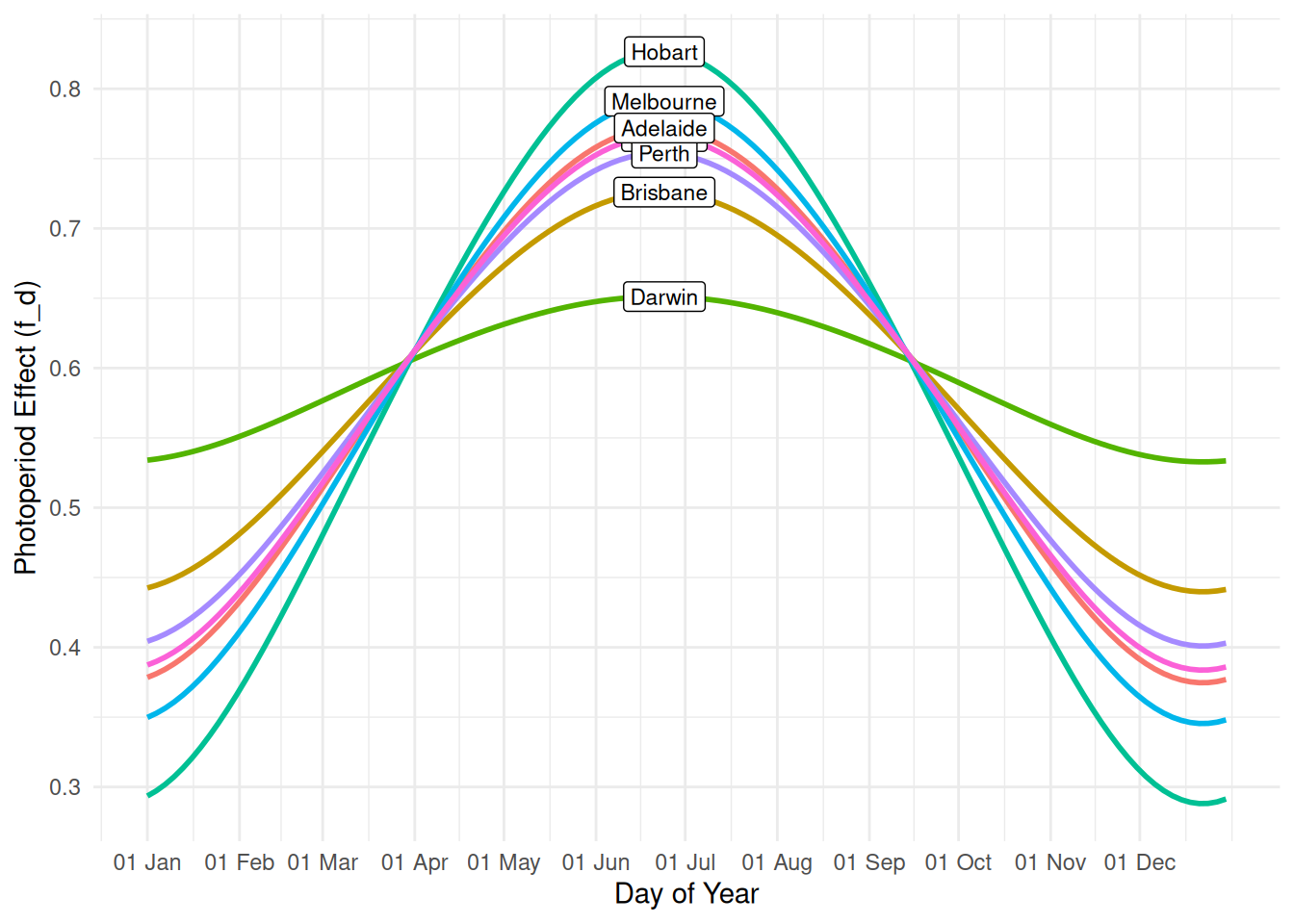
Photoperiod Effects on Heading Phase for Wheat in Australia
Photoperiod, or day length, is a key environmental factor influencing duration of (Heading) phase in wheat. In Australia, the wide range of latitudes means that day length varies significantly across the country and throughout the year. This variation impacts how quickly wheat plants develop.
Day Length
Australia spans a wide latitude range, from about 10°S (northern tip) to 44°S (southern tip, including Tasmania).
This range covers tropical to temperate climates, resulting in significant variation in day length and photoperiod effects across the country.
The day length is calculated with twilight angle of 6 degrees, which is commonly used in agricultural models to represent the start and end of daylight.
The day length varies from 9.9876135 to 16.7005717 hours across Australia, with the longest days occurring in summer (around December) and shortest in winter (around June).

Photoperiod Effects on Phyllochron
Photoperiod, or day length, impacts on Heading phase when day length is shorter than 20 hours.
| Day Length (h) | Modifier \(\text{PpResponse}\) |
|---|---|
| 6.0 | 1.0 |
| 8.0 | 1.0 |
| 20.0 | 0.0 |
| 22.0 | 0.0 |
The calculated photoperiod effect \(\text{PpResponse}\) is ranged from 0.2749524 to 0.8343655 mainly in winter and southern regions.

Photoperiod impacts on wheat heading phase in all capital cities from late April to late August which is the major wheat growing season before flag leaf stage in Australia.

Conclusion
Photoperiod plays a significant role in wheat development across Australia, particularly in the southern regions where day lengths are shorter during the growing season. This impacts the rate of Heading Phase, which is crucial for determining the timing of key growth stages such as flowering and maturity.